by Jonathan Borella
And the way of aspiration is revealed.
Aspiration is the beginning of every practitioner’s journey. In the Buddha’s teaching aspiration is called Bodhicitta – the mind of awakening or the mind of love. It is the deep seeded desire to transform the unwholesome habits of the dualistic way we perceive ourselves, others, and the world in order to live for the benefit of all beings. If you are on the meditator’s path it is because you have already seen something about yourself or the world that has given rise to this mind.
I remember a very precious moment a few years ago; I was walking with an elderly man to whom I was giving care. We stopped on the sidewalk to enjoy the warm sun, him in his wheel chair and me kneeling beside him. As I looked down I noticed a small green caterpillar crossing the pavement. Admiring the way its body moved and pondering what it must be like to be a caterpillar I felt concentrated and at ease. My friend and I were both silent when suddenly a wasp or hornet, or some other kind of flying, stinging insect descended upon the happy caterpillar, plunging its venomous barb into the plumb wriggling body. I had an impulse to save the caterpillar but I stopped as I felt compassion for him and the wasp. I knew that the wasp was only doing what it must for its own survival, and I pitied its circumstances: dependent on the flesh and life of other beings for its own life. I knew that I was witnessing the human condition as well, and the rocks, and trees, and birds. The compassion I felt for the caterpillar and wasp was a deep compassion for all beings, for we are all wasps and caterpillars at the same time.
The deep desire to transform our dualistic perception in order to live for the benefit of all beings
The First Noble Truth the Buddha taught was the existence of suffering – suffering is sown into the fabric of our existence. This is the truth I learned as I watched the wasp and caterpillar, and it is with this insight that compassion is truly born. When we vow to live our lives with mindfulness and gratitude for the beings that make our lives possible, and to create as little harm as necessary, we hold life’s suffering tenderly in our own hand with eyes open. We begin our aspiration with the practice of the Fourth Mindfulness Training of the Order of Interbeing – Awareness of Suffering:
Before the awareness of suffering is fully integrated into our practice, meaning that we accept its reality and necessity for the continuation of life, we operate under the illusion that running away from pain and unpleasantness will bring us joy. Suffering is one side of life; joy is the other. We can’t shut out suffering without also shutting out joy. We need to find a way to be at peace – to hold life’s suffering in one hand and its joy in the other.
There is another moment of my practice that I’ll remember for a long time. This was during an intensely difficult period of my life, full of confusion and struggle. I had been holding on to a deep question, one that had been nagging at my mind and threatening to diminish my aspiration. “How can I ever be happy with so much suffering in the world?” I think this is a question we all ask at one time or another, particularly after watching or reading the news and during our own moments of grief. As I continued day after day, holding this question, maintaining awareness of suffering, I came to realize that peace was not dependent on answering this question; it was dependent on changing the question. It was a question that changed my life.
It came to me one day, while I was out practicing walking meditation at a park next to my apartment. It had been raining earlier that day and the sun had just begun to break through the clouds, shining in parallel beams and making everything sparkle. I had left the apartment with a deep feeling of sadness and despair, which I tenderly embraced with my breath. While I took slow steps, giving myself kindness, and enjoying the warmth of my coat I watched a young father teaching his son how to ride a bike. My eyes floated to the ground, then rose again with a flock of crows landing then taking off in unison. When the birds were out of sight, my vision naturally settled on the dramatic picture in the sky – enormous cloud formations in all shades and textures of gray reflecting the golden sun. Suddenly, the question came to mind, “How can I not be happy with so much joy in the world?”
Suffering is sown into the fabric of our existence. With this insight compassion is born.
There is suffering in the world and in our lives. We cannot exist within a body and mind without experiencing death, loss, sadness, and frustration. But the Buddha taught with the Third Noble Truth that there is also joy, love, compassion, and peace; and if we have the aspiration to look deeply into suffering, we can experience them directly. We feel our heart break when we watch a lion tackle a deer and rip it to shreds. But if we have the courage not to turn away, we can also see the lion bring back the flesh to share with her cubs. In that moment, we become determined to practice the Seventh Mindfulness Training: Dwelling Happily in the Present Moment.
This is a transformative time in our practice. We realize that suffering and happiness exist together within every single moment and that it is not possible to run from one to the other. Our aspiration then becomes to join them together, one in each hand, at the level of the heart and grow a lotus of compassion. Touching this source of compassion within ourselves naturally compels us to live in a meaningful way, at peace in the middle of suffering and joy. And because we have compassion, our greatest joy is sharing the way with others. We soon find that we cannot continue our practice for our sake alone so we commit ourselves to the service of Sangha building. For me, this was the moment I stepped on the path toward ordination in the Order of Interbeing and was the moment my aspiration became fully alive. When we take refuge in the three jewels, we affirm this aspiration in ourselves and in our community.
I aspire to help all people recognize their own awakened nature,
realizing the Mind of Love.
Taking refuge in the Dharma in myself,
I aspire to help all people fully master the ways of practice
and walk together on the path of liberation.
Taking refuge in the Sangha in myself,
I aspire to help all people build fourfold communities,
to embrace all beings and support their transformation.

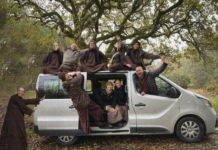








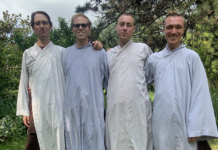


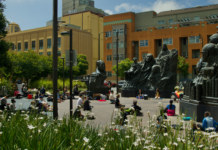


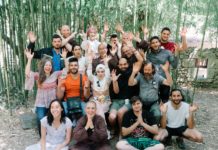

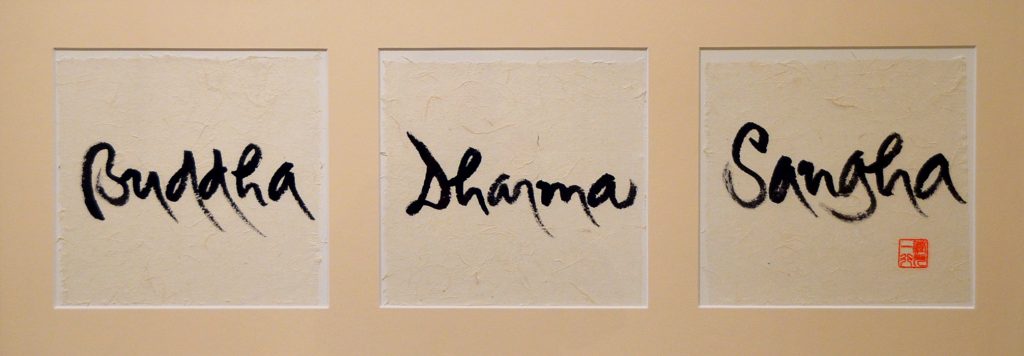
Your sharing reminds me of Thay’s poem, “Pleas
Hi,
Do you know who did that calligraphy?
Thanks.
Deborah
Hi Deborah, thanks for reading the article! The calligraphy is done by Thich Nhat Hanh 🙂
great! thank you. I’d like to use it, but I wanted to make sure I gave proper credit.
That’s not a problem. Thanks for asking!